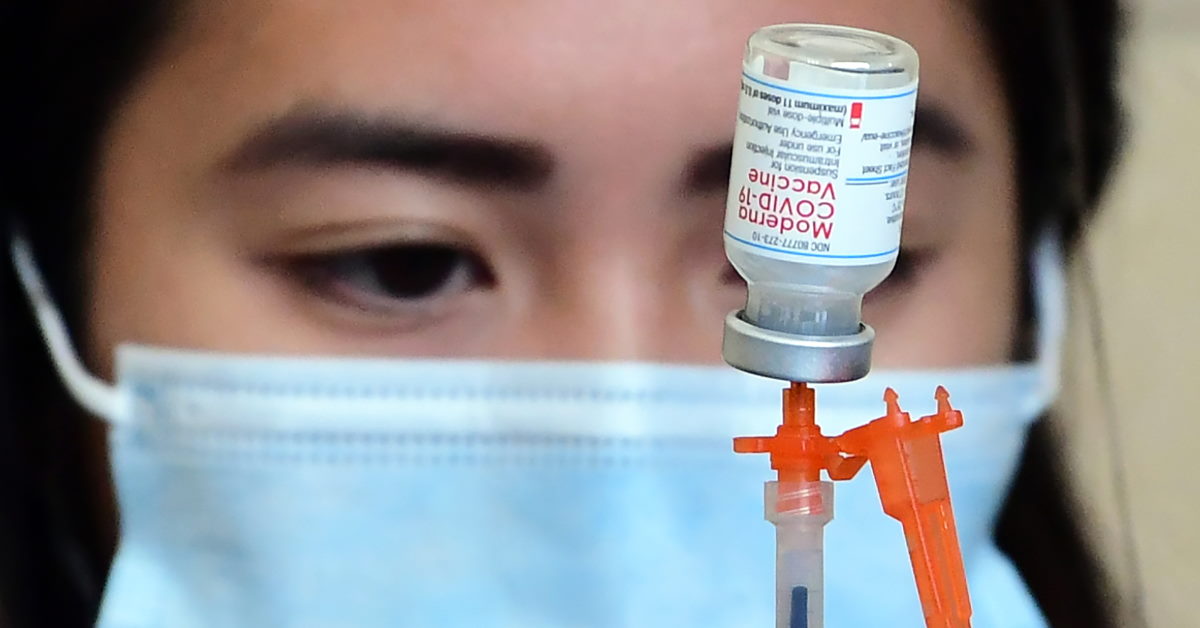United States (US) biotech company Moderna on Wednesday announced positive results for a new vaccine that targets both the original COVID strain and Omicron, and sees the shot as its "lead candidate" for a booster this fall.
The so-called "bivalent" vaccine was tested in a trial of 814 adults and shown to produce 1.75 times more Omicron-specific neutralizing antibodies, which have the power to prevent infection, compared to Moderna's original Spikevax vaccine.
All of the participants previously received three doses of Spikevax, and then slightly more than half went on to get a fourth dose of the bivalent shot while the rest got another dose of Spikevax. Antibody levels were tested one month later.
The group that got the new shot also received slightly superior protection to the ancestral strain of COVID compared to Spikevax – though original COVID has long since disappeared from circulation.
"We are thrilled," said Stephane Bancel, CEO of Moderna in a statement, adding he anticipated this vaccine would be the company's lead candidate for authorization as a booster this fall.
"We want to be as ready as early as August for shipping," he added to investors in a call.
The results were broadly welcomed by experts, who agreed Moderna's vaccine is now the front runner as a booster, though some gave a note of caution.
"We won't know about clinical outcomes until later this year," tweeted Eric Topol, a physician and scientist at Scripps Research Translational Institute. The study concerns only antibody levels, which are thought to serve as a useful proxy for how a vaccine will perform, but can't make precise predictions.
Breakthrough infections have risen since Omicron became dominant in late 2021, with vaccine makers hoping to restore efficacy to previous levels, even as first-generation vaccines continue to protect well against severe disease and death.
Omicron Subvariants Challenge
Moderna officials did concede during the investor call that antibody levels would be lower against Omicron's subvariants that are now in circulation, but said it believed it was still a superior booster than repeating Spikevax.
The BA.2.12.12 variant is currently dominant, followed by BA.2, with BA.4 and BA.5 rising, according to Centers for Disease Control and Prevention (CDC) data. Each successive Omicron subvariant appears to have a transmission advantage over those that came before it.
Moderna also doesn't yet have data on durability – how the new vaccine booster will fare three months and six months out.
The problem of an ever-evolving virus poses a challenge for health authorities. A panel of Food and Drug Administration (FDA) experts will meet 28 June to discuss considerations and strategies for boosters in fall and winter.
"Society is moving toward a new normal that may well include annual COVID-19 vaccination alongside seasonal influenza vaccination," top FDA officials wrote in a letter to the Journal of the American Medical Association in May.
President Joe Biden's government has said it has enough funds to deliver additional boosters for those at highest risk this fall – including the elderly and those with immune compromised conditions.
But whether these vaccines will be made widely available to the general public for free could depend on whether Congress authorizes US$22.5 billion in funding the White House is seeking.
